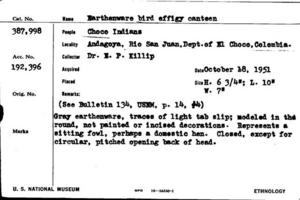The Smithsonian Folklife Festival will be held from June 30 to July 4 and July 7 to 11, 2011 on the National Mall. Read more about the history of the Folklife Festival here.
Last week during a pre-opening tour of the 2011 Smithsonian Folklife Festival, I received a sneak preview of the cultures and traditions being highlighted on the National Mall. This year’s Festival features three distinct themes: Rhythm and Blues, the Peace Corp, and Colombia. All look interesting, but it was the section on Colombia that piqued my curiosity the most.
Colombia: The Nature of Culture explores the country by breaking it up into its regions based on their bio-cultural diversity. Visitors to the festival can work their way from the Andean region to the Amazon region, from the Pacifica region to the Orinoquía region and everything in between. What becomes clear along the way is how intrinsically connected Columbian culture is to nature. Even the tents for this program were specially made out of guadua bamboo, an important material in Colombian culture. I left the tour excited for the festival and curious about the Smithsonian’s relationship with Colombia and its rich environment.
What I have since learned is that the collaboration between the Smithsonian and Colombia dates back to the early days of the first US National Museum (USNM) through the sharing of collections, the undertaking of expeditions, and the increased communication and correspondance.
Beginning in the late 1800s, the Smithsonian International Exchanges Service, a Smithsonian clearinghouse for the exchange of literary and scientific works worldwide, shipped publications to Colombia, including research journals to the Sociedad de Naturalaistos Clombianos. Exchanges, however, were not strictly limited to publications. Colombia’s natural history institutes, universities and individual collectors also sent specimens to the Smithsonian for identification. Mary Jane Rathbun, a carcinologist (expert in crustaceans) at the USNM, for example, received hundreds of Colombian crustaceans. Collections from the 1913 Walker Expedition to Santa Marta, Colombia and individual collectors arrived in her workroom. Rathbun described, catalogued, and identified the specimens and published several articles increasing the understanding of these species.
One of the Smithsonian’s most avid travelers to Colombia was Ellsworth P. Killip, a botany curator who also conducted numerous expeditions to the country. A specialist in the taxonomy of South American plants, Killip not only collected specimens extensively in Colombia, but also created a valuable network of correspondents throughout the country for over twenty years. Killip also connected fellow Smithsonian staff, including grass expert Mary Agnes Chase, with Colombian naturalists in order to increase the Institution’s knowledge and identify collections of Colombian natural history.

In 1941, Alexander Wetmore, ornithologist, Director of the US National Museum, and later sixth Smithsonian Secretary, traveled to Colombia with Melbourne Armstrong Carriker, Jr., a noted ornithologist marine malacologist (dealing with the study of mollusks). In addition to conducting their own scientific research, Wetmore and Carriker enhanced communication and exchange between the Smithsonian and Columbia by making numerous contacts in the country. Carriker, who had lived in Colombia for several years with his father and noted ornithologist, Melbourne Armstrong Carriker, aided Wetmore in meeting university specialists and directors, such as Brother Apolina Maria from the Colegio De La Salle, Bogatá, Colombia. One of the strongest connections made on the trip was with the Instituto de Ciencias Naturales of the Universidad in Bogotá. Here, Wetmore met with Armando Dugand, Director of the institute; Father Antonio Olivares, an ornithologist; and José Ignacio Borrero, Chief Ornithologist. These relationships blossomed. Dugand arrived at the Smithsonian’s US National Museum to study botany in 1942; Olivares came to study ornithology with Wetmore in 1952; and Borrero visited the museum in 1958. Furthermore, students from the institute also traveled to Washington, DC, to study at the museum.
To this day the Smithsonian continues its partnerships with Colombia’s people, diverse environments, and culture. Stop by the festival this year and check out a country you are sure to be as fascinated with as the Smithsonian’s staff has been for years.
Produced by the Smithsonian Institution Archives. For copyright questions, please see the Terms of Use.




Leave a Comment